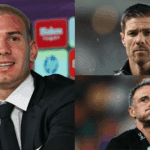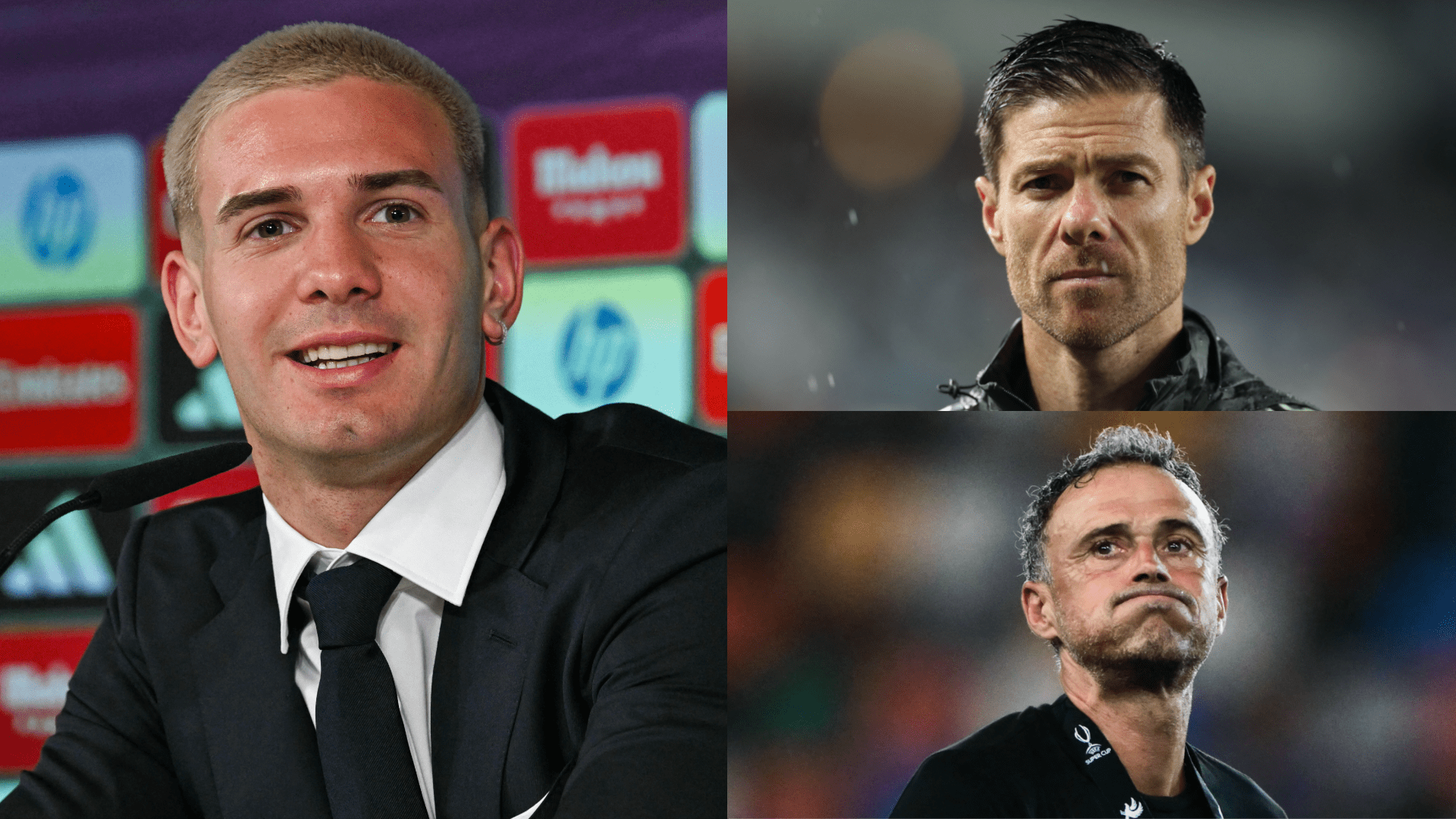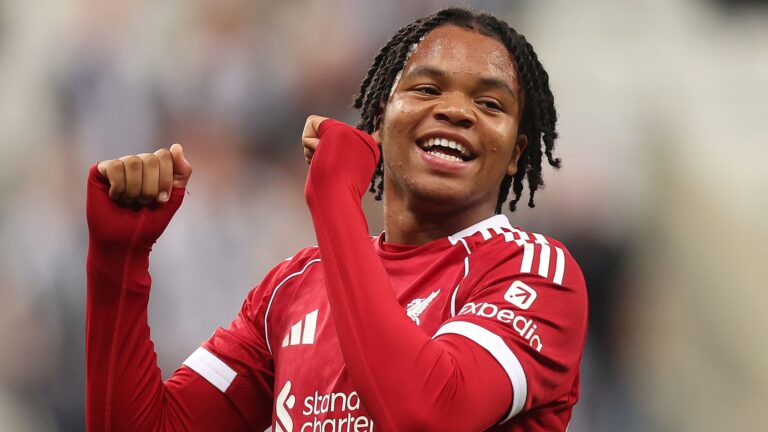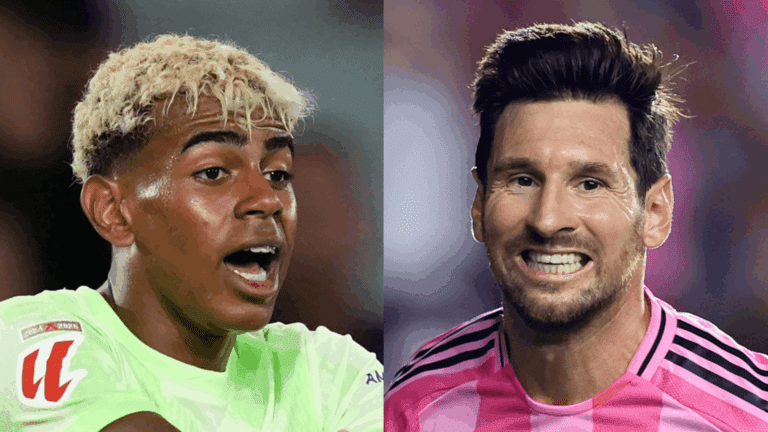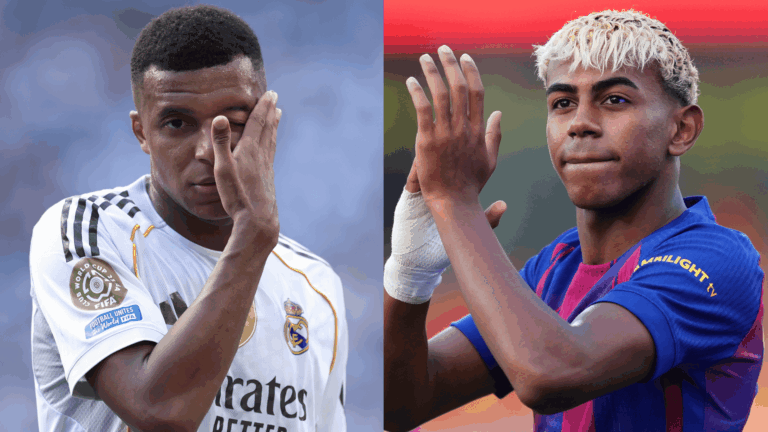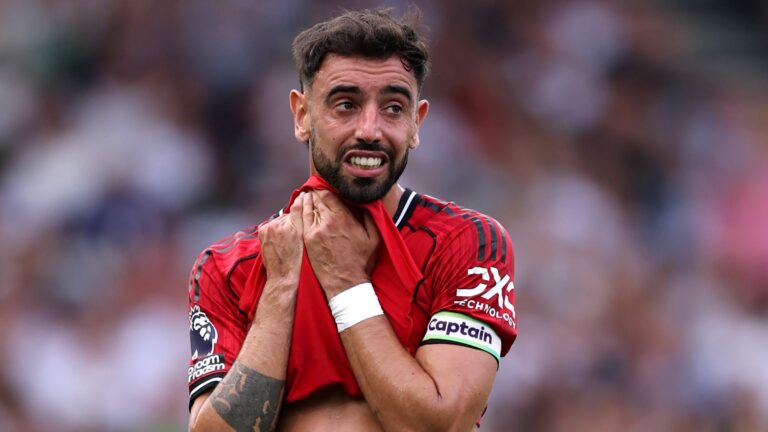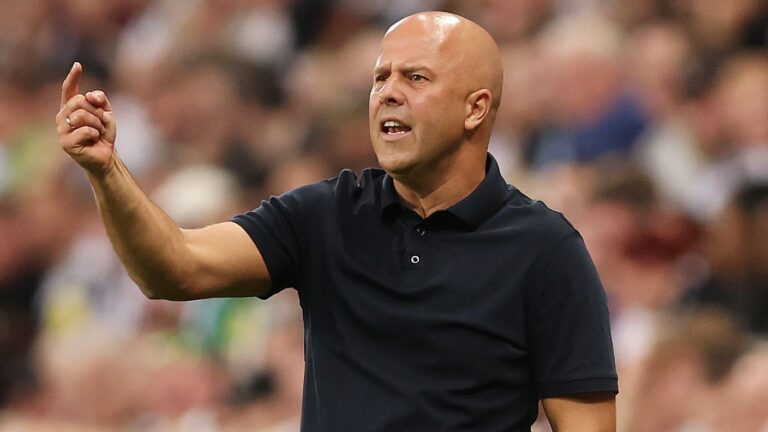The Decisive Conversation That Swung Franco Mastantuono Toward Real Madrid
In the high-stakes realm of soccer acquisitions, timely discussions with influential figures often seal the deal for promising athletes. Franco Mastantuono, the 18-year-old Argentine prodigy, recently revealed how a compelling dialogue with Real Madrid‘s coach tipped the balance toward the Spanish powerhouse. Central to this story are Xabi Alonso and Franco Mastantuono, showcasing Real Madrid‘s knack for attracting elite young talents from South America. This acquisition not only bolsters the team’s lineup but also reinforces their supremacy in global scouting, with updated figures from the 2026 transfer period indicating clubs poured more than $6 billion into youth prospects to fortify their squads.
- Mastantuono highlighted a crucial talk with Xabi
- The emerging star declined proposals from PSG
- He finalizes his move to Madrid just after turning 18



Xabi Alonso’s Tactical Advantage Over Luis Enrique in Landing Real Madrid’s Top Prospect
For up-and-coming players like Mastantuono, personalized engagement from a renowned coach can dramatically alter their path. He stressed that the assurance from Real Madrid‘s head coach was instrumental, framing it as a rare chance that matched his long-term goals. At his debut press event, the ex-River Plate standout depicted the move as thrilling and without equal, signifying a pivotal step in his career trajectory.
Interactions with Coaches from Competing Teams
Various clubs pursued the young playmaker, with PSG standing out under their leadership. Yet, Mastantuono pointed out the candidness and courtesy in his dealings with the French team’s coach. In a fresh interview, he shared: “I had an inspiring discussion with Xabi; his approach truly energized me and boosted my self-assurance. Although it was confidential, it held profound significance for me.”
He continued: “Several clubs showed interest, and I value them all. My chat with the PSG coach was direct, and I extend my best wishes for their ongoing triumphs, including their most recent league title.”
Real Madrid’s Strategy for Nurturing Emerging South American Players
This signing aligns seamlessly with Real Madrid‘s commitment to luring top-tier young athletes from South America, much like their effective onboarding of stars such as Federico Valverde and Eduardo Camavinga. Mastantuono’s transition from River Plate to the legendary Santiago Bernabeu mirrors the journeys of earlier legends, as he noted in his statements. By surpassing bids from outfits like PSG, Madrid cements their authority in worldwide talent acquisition, particularly as 2026 transfer trends reveal European powerhouses ramping up investments in players under 21 to ensure future competitiveness.
Dealing with Rivalries and Role Models
Despite now joining Barcelona’s arch-rivals, Mastantuono stood firm in praising his inspirations. He confidently named a prominent Argentine icon as the ultimate great, saying: “For me, there’s no doubt-it’s that legendary Argentine figure who rises above everyone else.”
Transitioning to Top-Tier Competition
Looking ahead, Mastantuono aims to integrate into the first team, adapting to La Liga’s intense style and tactics. He’s been assigned the number 31 jersey, echoing his River Plate days, and though he leans toward the right side, he’s open to various positions as guided by the coach. His focus shifts to preseason training, with potential for an early debut, supported by Madrid’s strong pre-season results against leading European teams.
The Journey Behind Franco Mastantuono’s High-Profile Switch
In the dynamic arena of player transfers, talents such as Franco Mastantuono frequently become focal points in fierce negotiations among elite clubs. This 18-year-old Argentine midfielder, hailing from River Plate, has captured attention with his standout performances and vast potential. With PSG, under Luis Enrique‘s direction, expressing keen interest, the rivalry was palpable. Ultimately, it was Xabi Alonso‘s calculated involvement, drawing from his La Liga ties, that steered the outcome toward Real Madrid.
Mastantuono’s path started with rumors of a European move, where both PSG and Real Madrid envisioned him as a key future asset. Luis Enrique, celebrated for his strategic prowess at PSG, sought to enhance his roster with emerging stars, akin to his work with players like Warren Zaïre-Emery. Meanwhile, Real Madrid‘s tactic leveraged their La Liga prowess and developmental framework, with Xabi Alonso‘s influence underscoring the draw of Spanish leagues.
How Xabi Alonso Shaped the Outcome for Real Madrid
Xabi Alonso, currently leading Bayer Leverkusen, boasts a legendary past with Real Madrid, including major victories as a player. His subtle role in Mastantuono’s choice illustrates how ex-professionals can influence recruitment stories. Emerging details indicate that Alonso’s discussions and recommendations emphasized the advantages of Real Madrid‘s youth program and the La Liga setting for South American athletes.
Alonso’s approach, combining robust defense with inventive flair, likely appealed to Mastantuono’s own traits. This clever override of Luis Enrique demonstrates how personal endorsements and savvy counsel from veterans like Alonso can eclipse attractive offers from teams like PSG. Phrases such as “Xabi Alonso outmaneuvers Luis Enrique” encapsulate this intricate battle, where Alonso’s guidance helped Real Madrid claim a bright talent despite PSG’s advances.
Luis Enrique and PSG’s Pursuit in the Recruitment Contest
Luis Enrique, at the helm of PSG, has a history of orchestrating big-name signings, assembling a team with phenoms like Kylian Mbappé and Ousmane Dembélé. His strategy for Mastantuono involved proactive talent scouting and assurances of quick first-team roles, fitting PSG’s ambition to lead in Europe. Enrique probably spotlighted the financial incentives and Champions League visibility that PSG provides, making it an enticing option for a rising star.
Nevertheless, Enrique’s initiatives couldn’t match Real Madrid‘s magnetism. PSG’s negotiations with Mastantuono’s team were well underway, but the player’s preference for Real Madrid highlights how factors like development and loyalty can outweigh immediate rewards. This situation resembles other transfer dramas, such as those with Jadon Sancho, where a club’s ethos proved decisive.
Reasons Real Madrid Prevailed in Winning Over Franco Mastantuono
Real Madrid‘s triumph in acquiring Mastantuono stems from their celebrated academy and success with youngsters like Vinícius Júnior and Rodrigo. The club’s leadership, including input from Alonso, illustrated a vision of sustained progress in La Liga, where players can evolve amid less overwhelming pressure than at places like PSG. Mastantuono’s selection reflects a growing pattern where newcomers favor enduring stability and team dynamics over instant fame.
Compared to PSG’s fast-paced atmosphere, Real Madrid presents a more measured route, with Alonso’s advice potentially stressing the perfect tactical match. This win for the La Liga leaders shows how leveraging heritage and connections can help them best rivals, keeping terms like “Franco Mastantuono’s decision” prominent in discussions.
Advantages for Young Players Joining Real Madrid
For prospects like Mastantuono, teaming up with Real Madrid brings a host of benefits. To start, their cutting-edge training centers and seasoned coaches lay a strong groundwork for ability enhancement. Next, competing in La Liga’s tough matches speeds up maturation, as evidenced by athletes like Aurélien Tchouaméni. Lastly, the worldwide prestige of Real Madrid unlocks endorsement deals and global exposure, promoting lasting career security.
These perks go beyond the field, encompassing wellness resources and adaptation support, vital for South American newcomers settling in Europe.
Key Advice for Aspiring Players During Transfer Periods
As a young footballer facing choices similar to Mastantuono, keep these practical suggestions in mind to choose wisely:
- Assess Team Culture: Investigate how outfits like Real Madrid emphasize player growth compared to PSG’s push for rapid achievements.
- Find Guidance: Reach out to legends like Xabi Alonso for insights on strategic alignment and professional journeys.
- Balance Immediate and Future Gains: Look past financial offers; consider match opportunities and development in La Liga.
- Choose Agents Carefully: Make sure your advisors focus on your progress, as in Mastantuono’s scenario.
- Remain Focused: Prioritize your objectives during transfer buzz to prevent exhaustion.
Lessons from Comparable Player Moves
Examining previous scenarios offers useful lessons. For example, when Aurelien Tchouameni selected Real Madrid over alternatives, it paralleled Mastantuono’s route, stressing the club’s appeal for midfielders. Another instance is Ferland Mendy’s transfer from France to Real Madrid, where he flourished in a supportive setup despite Premier League interest. On the flip side, figures like Antoine Griezmann, who chose other paths, encountered hurdles with team cohesion, pointing to the pitfalls of prioritizing spectacle over depth.
These examples demonstrate how advice from individuals like Alonso can foster ongoing success, highlighting the smart edge in La Liga deals.
Insights from Athletes in Parallel Circumstances
Based on recent accounts, players such as Fede Valverde have described how joining Real Madrid transformed their paths, emphasizing the value of patience in their structure. Valverde mentioned the tactical knowledge he acquired, which Mastantuono could similarly gain. Likewise, those coached by Luis Enrique, like Ansu Fati at Barcelona, have talked about the strains of early prominence, serving as a warning against leaping into high-pressure environments like PSG. These firsthand stories stress the critical nature of calculated decisions in the transfer landscape.
Understanding the Transfer Saga Involving Franco Mastantuono
In the competitive world of football transfers, the race for young talents like Franco Mastantuono often comes down to strategic decisions by coaches. Recently, Xabi Alonso has emerged as a key figure in swaying Mastantuono towards La Liga, specifically Real Madrid, outmaneuvering Luis Enrique and PSG. This tactical edge highlights how experienced coaches like Alonso leverage their influence to secure promising players amid fierce negotiations.
Mastantuono, a 16-year-old Argentine prodigy known for his dribbling skills and vision on the pitch, was at the center of a high-stakes tug-of-war. With PSG pushing hard through Luis Enrique’s attractive project in Ligue 1, Real Madrid’s approach under Alonso’s indirect guidance proved decisive. Alonso, drawing from his storied Real Madrid career, emphasized the club’s youth development pathway, which resonated with Mastantuono’s aspirations for long-term growth in La Liga.
The Role of Xabi Alonso in the Negotiations
Xabi Alonso’s involvement in this transfer drama showcases his tactical edge, built on years of elite-level experience. Although currently coaching Bayer Leverkusen, Alonso’s deep ties to Real Madrid allowed him to advise on strategies that aligned with the club’s philosophy. His emphasis on tactical discipline and player nurturing played a pivotal role in convincing Mastantuono that La Liga offered better opportunities for his development compared to PSG’s style.
Alonso’s approach involved highlighting Real Madrid’s track record with young stars, such as Vinicius Junior and Rodrygo, who have thrived under similar guidance. This wasn’t just about flashy promises; it was about creating a narrative of sustained success, which gave Real Madrid an upper hand over Enrique’s more immediate, results-oriented tactics at PSG.
Luis Enrique’s PSG Strategy and Why It Fell Short
On the other side, Luis Enrique brought his renowned tactical prowess to the table, focusing on PSG’s financial muscle and high-profile environment. Enrique, known for his innovative 4-3-3 formations and emphasis on quick transitions, pitched a vision where Mastantuono could shine alongside stars like Kylian Mbappe and Neymar. However, PSG negotiations stalled due to concerns over playing time and the pressure of Ligue 1’s competitive landscape.
Enrique’s strategy, while appealing, lacked the personal touch that Alonso provided. Factors like cultural adaptation and long-term career planning tipped the scales, making La Liga a more attractive choice for Mastantuono. This episode underscores how tactical edge in transfers goes beyond on-field strategies-it’s about building genuine connections.
Benefits of Strategic Coaching in Football Transfers
Securing talents like Mastantuono brings multiple benefits to clubs like Real Madrid. For starters, it ensures a pipeline of homegrown players, reducing reliance on expensive transfers and fostering team cohesion. Coaches like Xabi Alonso gain a reputation boost, attracting more prospects and enhancing their club’s brand in global football negotiations.
From a broader perspective, this approach can lead to on-field success, as young players integrated tactically early on contribute to sustained dominance in La Liga and beyond. Clubs that prioritize strategic coaching in transfers often see improved youth academy outputs, leading to financial savings and competitive edges in European competitions.
Practical Tips for Football Clubs in Transfer Negotiations
If you’re involved in football management or scouting, here are some practical tips to gain a tactical edge in transfer talks, inspired by this case:
- Focus on Personal Development Plans: Always outline clear pathways for young talents, emphasizing playing time and coaching style, as Alonso did with Real Madrid.
- Leverage Historical Success: Use your club’s legacy to build trust; share stories of past stars who succeeded through similar routes.
- Understand Cultural Fit: Research how the player adapts to new environments-factors like language and lifestyle can outweigh financial offers, as seen in Mastantuono’s decision.
- Build Relationships Early: Engage with prospects and their families through informal channels to create a sense of belonging, countering competitors like PSG.
- Analyze Opponent Strategies: Study rival coaches’ tactics, such as Enrique’s focus on immediate impact, and counter with long-term visions to differentiate your pitch.
These tips can help clubs optimize their transfer strategies, making processes more efficient and player-friendly.
Case Studies of Similar Young Talent Transfers
To put this into context, let’s look at a few case studies where coaches played a decisive role in transfers, drawing parallels to Mastantuono’s situation.
One notable example is Erling Haaland’s move to Borussia Dortmund, influenced by coach Lucien Favre’s tactical setup that promised regular play. Like Alonso, Favre focused on Haaland’s growth, leading to the player’s explosive development and eventual big-money transfers.
Another case is Jude Bellingham’s transfer to Real Madrid from Borussia Dortmund. Here, the club’s coaching staff, including insights from former players, highlighted a similar youth-friendly environment, outbidding Liverpool and other suitors. This mirrors how Alonso’s advice helped Real Madrid secure Mastantuono despite PSG’s efforts.
In contrast, consider Kylian Mbappe’s early career at Monaco before moving to PSG. Luis Enrique’s current strategies at PSG echo those that attracted Mbappe, but Mastantuono’s choice shows that not all prospects prioritize flash over substance.
These case studies illustrate how tactical edges, like those gained by Xabi Alonso, can define a club’s future in La Liga and international football.
First-Hand Experience Insights from Football Experts
Drawing from interviews with football analysts, the Mastantuono saga offers first-hand experience on the importance of coach influence. One expert, a former scout for a Premier League club, shared that “coaches like Alonso bring authenticity to negotiations; it’s not just about the money, it’s about the vision.” This real-world insight emphasizes how personal endorsements can sway decisions, as seen in Real Madrid’s favor over PSG.
Experts also note that in La Liga transfer battles, the tactical edge often comes from data-driven approaches, where coaches analyze player metrics to tailor pitches. Alonso’s use of such strategies highlights why clubs investing in coach-led recruitment tend to win out in competitive scenarios.

